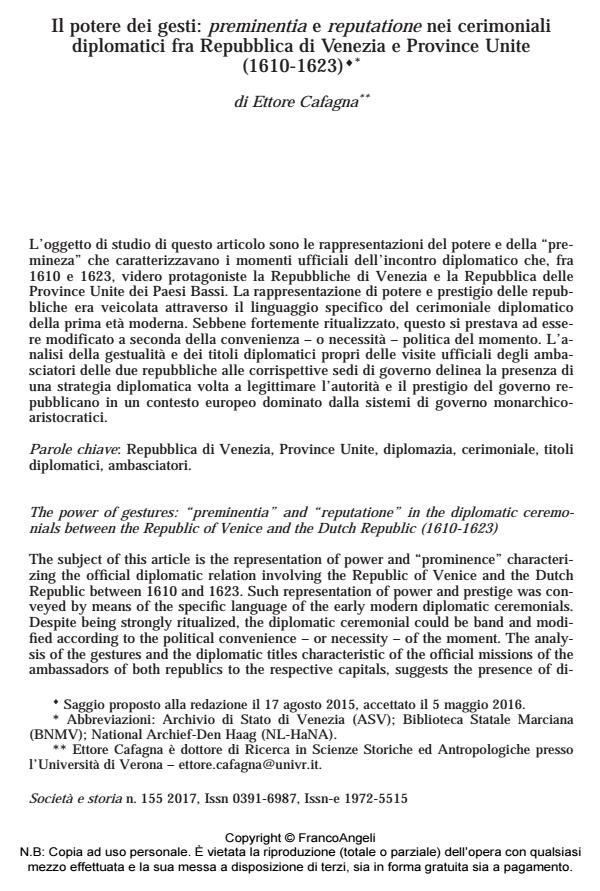The power of gestures: "preminentia" and "reputatione" in the diplomatic ceremonials between the Republic of Venice and the Dutch Republic (1610-1623)
Journal title SOCIETÀ E STORIA
Author/s Ettore Cafagna
Publishing Year 2017 Issue 2017/155
Language Italian Pages 27 P. 5-31 File size 117 KB
DOI 10.3280/SS2017-155002
DOI is like a bar code for intellectual property: to have more infomation
click here
Below, you can see the article first page
If you want to buy this article in PDF format, you can do it, following the instructions to buy download credits

FrancoAngeli is member of Publishers International Linking Association, Inc (PILA), a not-for-profit association which run the CrossRef service enabling links to and from online scholarly content.
The subject of this article is the representation of power and "prominence" characterizing the official diplomatic relation involving the Republic of Venice and the Dutch Republic between 1610 and 1623. Such representation of power and prestige was conveyed by means of the specific language of the early modern diplomatic ceremonials. Despite being strongly ritualized, the diplomatic ceremonial could be band and modified according to the political convenience - or necessity - of the moment. The analysis of the gestures and the diplomatic titles characteristic of the official missions of the ambassadors of both republics to the respective capitals, suggests the presence of diplomatic strategy designed to provide legitimacy to the authority and prestige of the republican form of government when in Europe the monarchical-aristocratic system was still prevailing.
Keywords: Republic of Venice, Dutch Republic, diplomacy, ceremonial, diplomatic titles, ambassadors.
- Quale storia della società? Uno sguardo sull'epoca moderna Paola Bianchi, in SOCIETÀ E STORIA 178/2023 pp.711
DOI: 10.3280/SS2022-178005
Ettore Cafagna, Il potere dei gesti: preminentia e reputatione nei cerimoniali diplomatici fra Repubblica di Venezia e Province Unite (1610-1623) in "SOCIETÀ E STORIA " 155/2017, pp 5-31, DOI: 10.3280/SS2017-155002